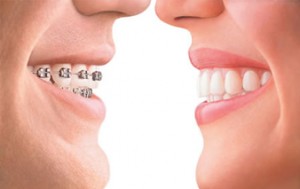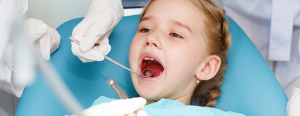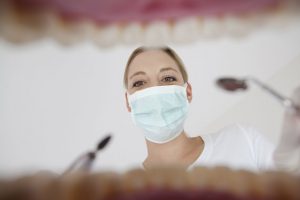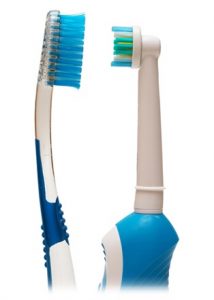Here you will find blogs written by our professional dentists.
 Holding onto your teeth makes a huge difference to both your general health and quality of life. 81% of Australian adults still have some natural teeth over the age of 65. Keeping your teeth is definitely achievable, so you can keep chewing your steak into your 90’s! Even holding onto a few teeth can help anchor a denture in place making eating easier than with full dentures.
Holding onto your teeth makes a huge difference to both your general health and quality of life. 81% of Australian adults still have some natural teeth over the age of 65. Keeping your teeth is definitely achievable, so you can keep chewing your steak into your 90’s! Even holding onto a few teeth can help anchor a denture in place making eating easier than with full dentures.
Oral hygiene is the most important part of keeping oral disease at bay. Poor cleaning leads to decay and gum disease which are the major causes of tooth loss. It is important to brush twice a day for two minutes. You need a soft toothbrush to be able to get right up to the gum line with circular, up and down movements- no need to scrub too hard, plaque is only a double cream consistency. On top of brushing your need to clean between your teeth at least once a day. Using floss if you have tight gaps and interdental brushes (such as Piksters). Diet also plays a factor in dental disease. If you are a bit of a sweet tooth, you are more likely to get tooth decay. Every time you have sugar, your mouth is acidic for 30 minutes afterwards. So if you can limit the number of ‘acid attacks’ on your teeth in one day, you can help prevent decay.
It is important to visit your dentist regularly for check-ups. It has been shown that adults who visit the dentist once a year or more have fewer missing teeth than average. The advantages of regularly attending are that your dentist can let you know if there is a spot you are missing on your cleaning and help improve your oral hygiene. We can spot cavities and gum disease at the early stages meaning we can treat before the problem gets big, painful and expensive.
Already lost some teeth? Don’t despair there are plenty of options to replace teeth from different types of dentures and bridges to implants that are almost like real teeth. At Ocean Breeze dental we try and save teeth whenever possible but we are also good at replacing teeth, giving you all the information for every available option for you to decide what is best for you.
Dr Samantha Ho
Brushing- Type of toothbrush-
I recommend a soft toothbrush as plaque only has a ‘ double cream’ type consistency. Therefore, a soft toothbrush can easily remove the build up. Using a soft brush also means you can get right up to the gum margin without causing gum tenderness.
Using a harder toothbrush and putting too much pressure onto the gums can also lead to tooth wear over time. I see many patients with tooth wear and recession in the roots of their teeth from brushing overly hard.
Electric toothbrushes- Electric toothbrushes are excellent for good cleaning. You can get the same result with a manual toothbrush if you are thorough with your cleaning but an electric toothbrush does the work for you. I would choose a rechargeable toothbrush over a battery powered one. There are two types of cleaning movement’s available these are oscillating and vibrating (or sonic), a study has shown them to be very close in efficiency, so it is a personal preference. I would also make sure it has a timer included. If you brush too hard, then find one that has a pressure sensor included.
Brushing technique- Firstly, tilt your brush at a 45-degree angle and aim the bristles at the gum margin. Use small circulation motions to brush up and down the tooth. Do the outside surface of all your teeth and then the inside surface of all your teeth. Then move to the biting surfaces of your teeth, place the bristles on top of the teeth and gently brush back and forth. You should brush for a full 2 minutes.
If you want more information, visit www.oceanbreezedental.com.au. Or you can book an appointment online or ring 03 5255 2584

If you are considering getting orthodontics, there are a few options available. Firstly, there are conventional braces using brackets and wires to move the teeth, or you could consider Invisalign. Invisalign is almost invisible. It is a series of clear plastic aligners; they look like clear thin plastic mouthguards.
Advantages of Invisalign
1) They are almost invisible, so are great for adults who don’t want to have visible braces.
2) It is easier to clean with Invisalign as you just remove the aligners and clean as normal.
3) They are not as big as traditional braces, so you get less rubbing and scratching of the gums and cheeks.
4) They are less tender on your teeth because they move the teeth a bit slower than fixed braces.
Advantages of conventional braces
1) You don’t have to remove them to eat. With Invisalign, you have to remove the aligners to eat. If this isn’t an option then maybe conventional braces are for you.
2) Not so patient reliant- if you have an unmotivated teenager they may not wear their Invisalign aligners for long enough, with braces this isn’t an option.
3) They can fix your bite better. Braces are quicker to fix an incorrect bite than Invisalign.
We find in our surgery that most of the time teenagers are better suited to fixed braces and adults are happier with Invisalign. We always go through the different options with you, however.
For more information visit www.oceanbreezedental.com.au. You can book a consultation to discuss your options with one of out dentists by ringing- 5255 2584, or you can book online.
A lot of parents are unsure of the appropriate age to bring their child to the dentist.

Hence, for some kids, the first visit is with a toothache. Resolving a toothache usually requires invasive dental procedures involving anesthesia. Having a traumatic first dental visit leave’s a bad memory for children and the fear of the needle and dentists gets ingrained. We see adults who have dental phobia due to similar experiences in their childhood.
The best way to avoid these situations is to get children in for regular dental visits from the age of two onwards when all the primary teeth have erupted.
It desensitizes the child to the gradual introduction of dental instruments in the mouth, the fear of a new place, white coat, the different chair, etc. The check-ups are non-invasive, fun & playful, so children leave happy with a gift. Starting check-ups early also helps the dentist build up trust and friendship with the child.
What’s involved in the checkups:
• Checking the number of teeth and oral hygiene habits.
• Diet evaluation and guidance
• The jaw growth pattern and bite – to assess any potential crowding issues in the future
• Airway evaluation –
• Any myofunctional problems like tongue tie, wrong swallowing patterns, mouth breathing, etc
• Any potentially harmful habits like thumb or finger sucking/tongue thrusting / excessive drooling/ lip sucking etc.
It would be recommended to keep the consultations with the same dentist so that the progress of any advice given or treatment plan can be monitored through to the next visit.
You can find more information on our website www.oceanbreezedental.com.au, or you can make an appointment with one of our dentists to see what the best solution is for you.
Phone number- (03) 5255 2584
Written by Dr Mahwash Masood

The health of your mouth reflects your overall health and wellbeing. Your dentist is checking for more than just cavities at your check-up. Below are a few things that your dentist can spot.
1) You are anaemic- Low iron levels often present in the mouth as pale gums, ulcers or sores in the corner of the mouth.
2) How well you are managing your diabetes – If your blood sugar levels are poorly controlled this can present as worsening of gum disease and even lead to gum abscesses. Also, poorly controlled diabetes can also lead to poor healing after dental treatment.
3) Stress- A lot of people clench and grind their teeth when under stress. Clenching and grinding leads to wear on your teeth and often soreness in the jaw and neck muscles.
4) Pregnancy- A common sign of pregnancy is gingivitis. So it is common to get increased swelling and bleeding of your gums if you are pregnant.
5) If you are suffering from Reflux- Acid Reflux shows up as wear on the inside surfaces of your teeth. If this is an ongoing problem, your dentist can suggest ways to reduce the damage to your teeth.
6) Mouth cancer- Dentist’s can spot suspicious areas in your mouth or on x-rays. Some mouth cancers are secondary metastases from other cancers in the body.
7) If you are a smoker- Heavy smokers usually get tobacco stains on their teeth. Smokers also are more prone to gum disease.
8) Intestinal and auto-immune diseases- Diseases such as colitis often present as ulceration in the mouth. Some skin conditions also have characteristic lesions occur in the mouth.
9) Sinusitis- Sinusitis is an infection in the bone spaces (the sinus’) of your jaw, this often presents as a toothache or a cloudy sinus on an x-ray.
10) Dry mouth- a reduction in saliva produced is usually a side effect from medication but can also be a sign of certain gland diseases.
If you have any concerns about anything unusual that you spot in your mouth, make an appointment at Ocean Breeze Dental 3/73 The Trak Arcade, The Terrace, Ocean Grove, to have one of our dentist’s check it out.


